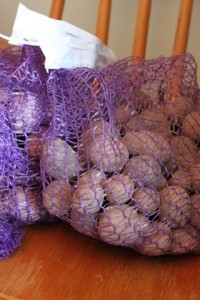 I just finished sorting bulk seed potatos into smaller portions for the group buy. Thirty nine pounds of organic seed potatoes are making their way to gardens around central Ohio!
A few weeks ago I shared how NOT to grow potatoes. Most of those who ordered with me would rather know the best practices for success, not failure.
I just finished sorting bulk seed potatos into smaller portions for the group buy. Thirty nine pounds of organic seed potatoes are making their way to gardens around central Ohio!
A few weeks ago I shared how NOT to grow potatoes. Most of those who ordered with me would rather know the best practices for success, not failure.
Here's what I can gather from personal experience, the Ohio Extension fact sheet, and a most helpful guide from Dayton Nursery.
When to Plant
Guides vary widely about when to plant. Some say to wait until a week before the frost free date (May 15 in Columbus, Ohio). Others advise planting as soon as the ground is workable.
Everyone agrees that gardeners should allow the seed tubers to begin sprouting indoors. Simply place them in a single layer in a sunny place until sprouts appear in one to two weeks.
If seed potatoes are large with many sprouts, cut them into pieces for additional plants. Do this a few days before you wish to plant, leaving the pieces again in a sunny place inside to dry.
My plan is to spread the seed potatoes in a single layer in a sunny place soon, wait two weeks, and plant in early April, weather permitting.
How to Plant
Potatoes like well-drained loose soil. If yours is heavy with clay or full of clods, break these up and enrich with compost or composted manure. You can also add thin layers of broken straw pieces.
Plant potatoes in a 3-4 inch deep furrow or trench. Space them 9-12 inches apart. Rows for commercial production are recommended to be space 24-36 inches apart. For the backyard gardener, this can be reduced to 12-24 inches.
If planting in a bucket, select 2-3 tubers per five gallon bucket laced with holes.
When potatoes sprout their beautiful leaves, allow to grow to 8-12 inches high. Then, hill up around the stem with additional soil or a mix of soil and straw. These hills are where many of the potatoes will grow. Hills also cover the potatoes so they do not turn green and develop the toxic alkaloid solanine.
Potato plants are susceptible to frost. If you plant before the frost free date, as I plan to, watch for frost warnings and cover your rows with a sheet or tarp if necessary.
When to Harvest
Potato plants will mature into tall leafy things. In July or August, they will send out interesting spiky flowers. Most gardeners pick these flowers to encourage the plant to put energy into the spuds, not flowers.
If you do not pick the flowers and the potatoes set fruit, know that the berries are poisonous like many other fruits of the deadly nightshade family. We had no idea potatoes would grow berries! After a little research, we decided to pick ours and throw them in the trash lest we contaminate our compost bin.
When the leaves die back in September, allow them to lay fallow for two weeks. This waiting time allows the potatoes to set their skin.
Carefully dig up the potatoes. Wipe off dirt but do not wash until you intend to eat them. Potatoes will keep in a dark cool place for 4-6 weeks, if they aren't eaten before then!
Ohio State University extension recommends curing potatoes for storage in a dark 60-65 deg. F place at 80 percent humidity for 10 days before placing in a dark 40-45 deg. F high humidity for permanent storage.
Do you have any potato growing tips or tricks? Share in the comments!
 First, most treated lumber is on sale for 40%+ off through April 18. We explained how we build beds and why we choose treated lumber in a post last year.
First, most treated lumber is on sale for 40%+ off through April 18. We explained how we build beds and why we choose treated lumber in a post last year.
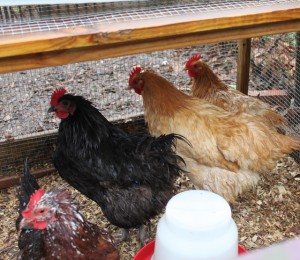

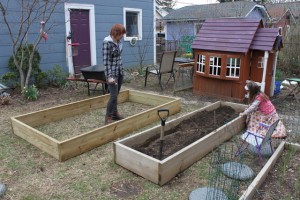
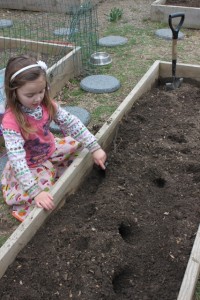
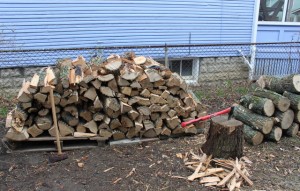

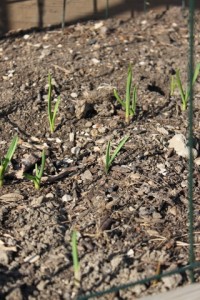

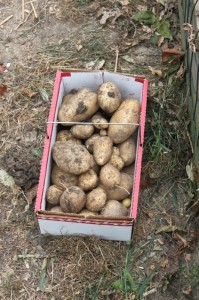
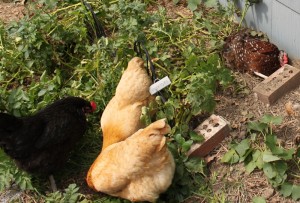
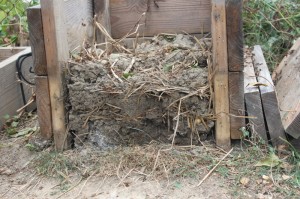

 The time is right for starting seeds, drawing up garden plot plans, and making tree orders. Like any obsessed gardener, I lay awake at night imaging the beauty that will bloom in the spring and lavish us with fruitful production through the summer.
Except I feel like I am cheating a lover.
The time is right for starting seeds, drawing up garden plot plans, and making tree orders. Like any obsessed gardener, I lay awake at night imaging the beauty that will bloom in the spring and lavish us with fruitful production through the summer.
Except I feel like I am cheating a lover.